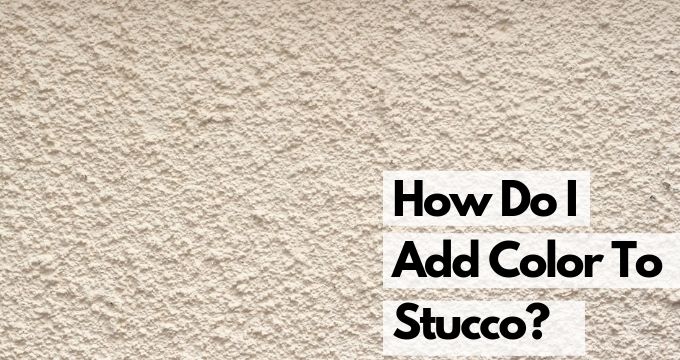
Adding color to stucco is a pretty simple process, if you know how to do it but I realized (when explaining the process) that some people have a hard time grasping how it's done...
Right?
It is indeed easy to do but you need to know what type of color to add to your material (powder or liquid), how much, how to mix it and so on. So really, there is quite a bit involved if you have never added any type of color to stucco, mortar, concrete, etc.
Let's dive in...
How Do I Add Color To Stucco?
To put it very simply, color can come in a powder or liquid form and is added to the base material, which is usually a white or whitish-grey color. Color is usually added to the finish coat and mixed in with the finish material before it is applied to the wall.
Powdered colors are usually used for cement based materials like traditional stucco finishes and liquid colors are added to acrylic and synthetic type of finishes.
That is basically a brief overview of the process and really all it comes down to. There are certain things that you want to do during the process though that will make your color consistent, make sure it is fully mixed into the material and other important details like that.
Adding Color To Traditional Stucco Finishes:
Traditional stucco finishes are made from Portland cement, lime, sand and water, and is usually white (for achieving lighter stucco colors) or a gray-white color (for the darker stucco colors).
Since these are bagged materials and are dry (meaning you have to add water), it makes sense that a powdered color is used to color the material. Here are the basic instructions on how to add color to traditional types of stucco finishes:
You will always want to try to add the powdered color to a percentage of the overall water required for mixing in order to get all of the color adequately mixed into the material.
- Find out how much water you need to mix up a single bag of finish material and use about 50% of that amount to mix up the powdered color with the water in a large container (around 15 gallons).
- Add the base coat material to the water/color mixture in the container.
- Mix according to manufacturer's instructions and add the remaining water to get the proper consistency.
Adding Color To Acrylic/Synthetic Stucco Finishes:
Acrylic and synthetic stucco finishes are made with liquid acrylic and aggregates that are usually some type of crushed rock of some sort. The material is essentially a premixed type of product, requiring only the color to be added to the white base.
The color for acrylic/synthetic stucco finishes is liquid and is added in and mixed together in a 5 gallon bucket (which is what the acrylic/synthetic stucco comes in). The color process is very similar to how paint is made, having a white base and adding color to it to achieve a desired color from a sample.
To add color to acrylic/synthetic stucco, you will follow these general steps:
- Open the bucket of material and set the lid aside.
- Shake the color bottle vigorously so that the color is mixed up adequately inside.
- Pour the color bottle into the bucket of material.
- Use a small amount of water in color bottle and shake to get any remaining color out.
- Mix according to manufacturer's specifications.
Premixed Stucco Colors:
It is important to note that you can get a premixed color made for you by certain stucco manufacturers. These will be premixed with the color already added to them.
For a traditional type of stucco finish, you will have the powdered color added to the base material inside the bag and the bag will be resealed. You will then just have to add the recommended amount of water to the bag and mix it. For acrylic/synthetic stucco finishes, the color bottle will be added to the bucket and mixed thoroughly.
Premixed colors can be ordered but will have an extended lead time over choosing a color and mixing it in yourself.
A Note On Color Consistency...
It is important to realize that color consistency is very important when mixing multiple batches of materials. If you can, it is always good to mix all of your material at once.
If you can't mix all of your materials at once then be sure you use the exacty method to mix all of you batches. You will want to at least make enough material for an entire wall, so the color stays consistent on the entire wall.

